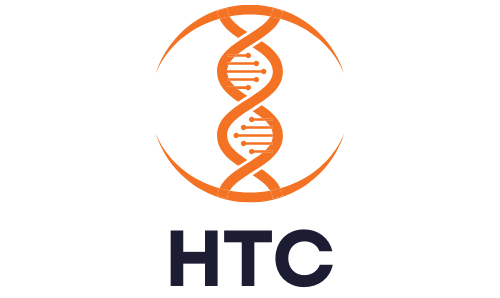Trends and Opportunities for Investing in Digital Health
The digital health sector has witnessed remarkable growth and innovation in recent years, driven by advancements in technology, changing consumer preferences, and the pressing need for more efficient and accessible healthcare solutions. From telemedicine and remote patient monitoring to mobile health apps and wearable devices, digital health technologies are revolutionizing the way healthcare is delivered and consumed. This transformation is not only enhancing patient outcomes but also creating a compelling investment avenue with significant potential for growth.
Digital health has become an attractive domain for investors seeking to capitalize on the ever-evolving healthcare landscape. The increasing adoption of virtual care, the demand for data interoperability, and the growing interest in personalized healthcare solutions are key drivers of this trend. The COVID-19 pandemic has further accelerated the integration of digital health technologies, as healthcare providers and patients alike sought alternative means of accessing and delivering care amidst unprecedented challenges.
This article delves into the trends and opportunities in digital health investments, offering insights for both academics and investors. By exploring the promising sectors within digital health, addressing the challenges and considerations, and identifying strategic investment opportunities, we aim to provide a comprehensive guide to navigating this dynamic and rapidly expanding field.
The Rise of Digital Health
Digital health encompasses a wide range of technologies and solutions designed to improve healthcare delivery, patient engagement, and overall health outcomes. These innovations leverage the power of digital technology to create more efficient, effective, and accessible healthcare systems. The scope of digital health is broad, including everything from telemedicine and remote patient monitoring to mobile health apps and wearable devices.
Telemedicine has transformed the way healthcare services are delivered, enabling patients to consult with healthcare providers remotely via video calls, messaging, and other digital communication tools. This technology has proven invaluable during the COVID-19 pandemic, allowing patients to receive care without the risk of exposure to the virus. Telemedicine also offers increased accessibility for individuals in rural or underserved areas, reducing the need for travel and making healthcare more convenient.
Remote patient monitoring uses connected devices to track patients' vital signs and health metrics in real time. These devices can monitor blood pressure, glucose levels, heart rate, and other critical indicators, sending data directly to healthcare providers. This continuous monitoring allows for timely interventions, reducing hospital readmissions and improving chronic disease management. For instance, patients with diabetes can use continuous glucose monitors to manage their condition more effectively, while those with cardiovascular issues can benefit from regular monitoring of their heart health.
Mobile health apps provide a wide array of functionalities, from managing medication schedules to tracking fitness and diet. These apps empower individuals to take a proactive role in their health, offering tools and resources to support wellness goals. Examples include apps that remind users to take their medications, track their physical activity, or provide mental health support through guided meditation and cognitive behavioral therapy exercises.
Wearable devices like smartwatches and fitness trackers have become increasingly popular, offering real-time health data and insights. These devices can monitor physical activity, sleep patterns, and other health metrics, providing users with actionable information to improve their health and well-being. Advanced wearables can even detect irregular heart rhythms, monitor oxygen levels, and alert users to potential health issues before they become serious.
The market for digital health is projected to reach $379 billion by 2024, according to a report by HLTH. Several factors are driving this growth, including the increasing adoption of virtual care, the need for data interoperability, and the growing demand for personalized healthcare solutions. The COVID-19 pandemic has significantly accelerated the integration of digital health technologies, as both healthcare providers and patients sought alternative means of accessing and delivering care during lockdowns and social distancing measures.
The increasing adoption of virtual care has been one of the most notable trends in digital health. Virtual care encompasses a range of services, including telemedicine, virtual consultations, and digital therapeutics, all designed to provide healthcare remotely. This shift towards virtual care has been driven by the need for safe, convenient, and efficient healthcare delivery methods, particularly during the pandemic.
The need for data interoperability is another critical driver of growth in the digital health sector. As healthcare systems generate vast amounts of data, the ability to seamlessly exchange and integrate this data across different platforms and providers is essential. Interoperability enables better coordination of care, improved patient outcomes, and more informed decision-making by healthcare providers.
Lastly, there is a growing demand for personalized healthcare solutions. Patients increasingly expect healthcare to be tailored to their individual needs and preferences. Digital health technologies, such as genomic testing and personalized treatment plans, allow for more precise and customized care. This trend towards personalization is transforming the patient experience and leading to better health outcomes.
The rise of digital health is characterized by rapid innovation and adoption of new technologies that are transforming healthcare delivery. The growth of this sector is driven by the increasing demand for virtual care, the necessity for data interoperability, and the push towards personalized healthcare solutions. As these trends continue to evolve, digital health presents significant opportunities for investors and holds the promise of a more efficient, effective, and accessible healthcare system.
Promising Sectors in Digital Health
As digital health continues to grow, several sectors stand out for their potential to transform healthcare delivery and offer significant investment opportunities. These sectors are characterized by their ability to address pressing healthcare challenges through innovative solutions, driving both patient engagement and better health outcomes.
Mental Health
The mental health sector has seen a significant surge in digital health solutions, driven by increasing awareness and destigmatization of mental health issues. Digital platforms offering teletherapy and mental wellness apps have become essential tools for providing accessible and cost-effective mental health care.
Teletherapy Platforms: These platforms enable individuals to connect with licensed therapists via video calls, messaging, or phone calls, offering flexibility and convenience. Examples include BetterHelp and Talkspace, which have gained widespread acceptance and user bases.
Mental Wellness Apps: Apps like Headspace and Calm provide guided meditation, stress relief exercises, and tools for managing anxiety and depression. These apps empower users to take control of their mental health and incorporate self-care practices into their daily routines.
The investment potential in mental health is substantial. The growing demand for accessible mental health services, coupled with the effectiveness and convenience of digital solutions, makes this sector an attractive investment avenue. Companies that innovate in this space and provide comprehensive, user-friendly platforms are well-positioned for growth.
Chronic Disease Management
Chronic diseases such as diabetes, heart disease, and respiratory disorders pose significant challenges for healthcare systems worldwide. Digital health technologies offer promising solutions for managing these conditions, improving patient outcomes, and reducing healthcare costs.
Remote Monitoring Devices: Devices such as continuous glucose monitors for diabetes, heart rate monitors for cardiovascular conditions, and spirometers for respiratory diseases enable continuous tracking of vital health metrics. These devices provide real-time data to patients and healthcare providers, facilitating timely interventions.
Mobile Apps: Apps designed for chronic disease management help patients track their symptoms, medication adherence, and lifestyle factors. For example, MySugr for diabetes management and HeartWatch for cardiovascular health offer personalized insights and reminders.
Virtual Care Platforms: Platforms like Livongo and Omada Health integrate remote monitoring, mobile apps, and virtual coaching to provide comprehensive care for chronic disease patients. These platforms support patients in managing their conditions more effectively and reduce the burden on healthcare systems by minimizing the need for in-person visits.
Investing in companies that develop and implement these technologies offers the potential for high returns, given the large and growing market for chronic disease management solutions.
Virtual Care and Telemedicine
The COVID-19 pandemic has significantly accelerated the adoption of virtual care and telemedicine solutions, highlighting their potential to revolutionize healthcare delivery.
Telemedicine Solutions: Telemedicine platforms like Teladoc and Amwell have experienced rapid growth, providing patients with the ability to consult with healthcare providers remotely.
These solutions offer numerous advantages, including cost savings, improved access to care, and enhanced patient experiences.
Advantages of Virtual Care: Virtual care reduces the need for physical visits to healthcare facilities, thereby lowering costs and minimizing the risk of infection. It also improves access to care for individuals in remote or underserved areas and offers greater convenience for patients with mobility issues or busy schedules.
The investment opportunities in telemedicine are vast, with the sector poised for continued growth as technology advances and healthcare providers and patients increasingly embrace virtual care solutions.
Remote Patient Monitoring
Remote patient monitoring has been revolutionized by the Internet of Things (IoT) and wearable devices, which enable real-time tracking of health metrics and vital signs.
IoT and Wearable Devices: Devices like smartwatches, fitness trackers, and connected medical devices collect and transmit health data continuously. Examples include the Apple Watch, which monitors heart rate and ECG, and devices like FitBit that track activity levels and sleep patterns.
Real-Time Health Tracking: These technologies allow healthcare providers to monitor patients' health status remotely, ensuring timely interventions and personalized care. They also empower patients to take an active role in managing their health, improving adherence to treatment plans and lifestyle modifications.
Benefits: Remote patient monitoring has the potential to improve patient outcomes by enabling early detection of health issues, reducing hospital readmissions, and lowering healthcare costs. It supports proactive healthcare management, leading to better long-term health outcomes.
Investing in companies that develop and deploy IoT and wearable technologies for remote patient monitoring presents a promising opportunity, given the increasing demand for real-time health tracking and personalized care solutions.
In summary, the digital health sector offers numerous promising investment opportunities across various domains, including mental health, chronic disease management, virtual care, telemedicine, and remote patient monitoring. These sectors are poised for significant growth, driven by advancements in technology, changing consumer preferences, and the ongoing transformation of healthcare delivery. As the market continues to evolve, investors who strategically navigate these opportunities can achieve substantial returns while contributing to the advancement of healthcare.
Challenges and Considerations
While the digital health sector presents numerous investment opportunities, it is essential to consider the challenges and potential roadblocks that could impact the success of digital health startups and technologies.
Regulatory Uncertainty
The regulatory landscape for digital health solutions is complex and ever-changing, with varying requirements across different regions and jurisdictions. Regulatory bodies such as the U.S. Food and Drug Administration (FDA) and the European Medicines Agency (EMA) have established guidelines for the approval and use of digital health technologies, but these regulations can differ significantly between regions.
Complexity and Variability: Navigating the regulatory requirements for digital health solutions can be challenging due to the complexity and variability of regulations. Companies must ensure that their products comply with relevant standards and obtain necessary approvals before entering the market.
Evaluating Regulatory Risks: Investors must carefully evaluate the regulatory risks associated with their investments. Understanding the regulatory landscape and potential compliance hurdles is crucial for mitigating risks and ensuring the successful commercialization of digital health solutions.
Scalability and Adoption
Achieving widespread adoption and scalability can be significant challenges for digital health startups. Several factors influence the long-term success of these solutions, including user engagement, interoperability, and reimbursement models.
User Engagement: Engaging users and ensuring sustained usage of digital health solutions is vital for their success. Solutions must be user-friendly, provide clear benefits, and integrate seamlessly into patients' and healthcare providers' routines.
Interoperability: Digital health solutions must be compatible with existing healthcare systems and technologies to facilitate data exchange and integration. Ensuring interoperability is essential for providing a cohesive and efficient healthcare experience.
Reimbursement Models: Securing reimbursement from healthcare payers is critical for the financial viability of digital health solutions. Companies must navigate complex reimbursement landscapes and demonstrate the value of their products to healthcare payers.
Data Privacy and Security
Digital health solutions often involve the collection and processing of sensitive personal health information. Ensuring robust data privacy and security measures is crucial to maintain user trust and comply with relevant regulations, such as the Health Insurance Portability and
Accountability Act (HIPAA) in the United States.
Robust Measures: Implementing strong data privacy and security measures is essential to protect sensitive health information from unauthorized access and breaches. Companies must invest in advanced security technologies and practices to safeguard user data.
Compliance with Regulations: Compliance with regulations like HIPAA is mandatory for digital health companies operating in regions with strict data privacy laws. Ensuring compliance helps prevent legal issues and fosters user trust.
Maintaining User Trust: Maintaining user trust is vital for the success of digital health solutions. Transparent data practices, clear communication about data usage, and robust security measures help build and sustain trust with users.
Pricing Models and Reimbursement
Determining appropriate pricing models and securing reimbursement from healthcare payers are significant challenges for digital health companies. Investors must carefully evaluate the potential for sustainable revenue streams and the ability to navigate the complex reimbursement landscape.
Appropriate Pricing Models: Developing pricing models that reflect the value of digital health solutions while remaining affordable for users is crucial. Companies must balance the need for profitability with the goal of widespread adoption.
Securing Reimbursement: Securing reimbursement from healthcare payers is essential for the financial success of digital health solutions. Companies must demonstrate the clinical and economic benefits of their products to gain payer support and reimbursement.
Sustainable Revenue Streams: Evaluating the potential for sustainable revenue streams involves assessing the long-term demand for digital health solutions and their ability to generate consistent revenue. This includes understanding market trends, user needs, and competitive dynamics.
Investment Strategies and Opportunities
To maximize the potential returns and impact in the digital health sector, investors need to adopt strategic approaches that capitalize on emerging opportunities. This involves adapting investment strategies, collaborating with industry experts, conducting thorough due diligence, and aligning investments with long-term trends.
Adapting Investment Strategies to Capitalize on Emerging Opportunities
As the digital health landscape evolves, investors must be agile and responsive to new developments and market trends. This includes identifying high-growth areas and technologies that address critical healthcare challenges. By staying ahead of the curve and investing in innovative solutions, investors can secure a competitive advantage and position themselves for long-term success.
Key Strategies:
- Identify High-Growth Areas: Focus on sectors within digital health that demonstrate rapid growth and significant market potential, such as telemedicine, remote patient monitoring, and mobile health apps.
- Invest in Innovative Technologies: Look for startups and companies that are pioneering new technologies and solutions, particularly those that leverage artificial intelligence, machine learning, and data analytics to enhance healthcare delivery and outcomes.
- Stay Agile: Be prepared to pivot investment strategies in response to new market trends, regulatory changes, and technological advancements.
Importance of Collaborating with Industry Experts and Conducting Thorough Due Diligence
Collaborating with industry experts and conducting thorough due diligence are critical components of a successful investment strategy in digital health. Industry experts can provide valuable insights into market dynamics, regulatory requirements, and technological advancements, helping investors make informed decisions.
Collaborating with Industry Experts:
- Leverage Expertise: Partner with healthcare professionals, technologists, and regulatory experts to gain a deeper understanding of the digital health landscape.
- Advisory Boards: Establish advisory boards comprising industry leaders and experts to guide investment decisions and strategic planning.
- Networking: Engage in industry conferences, forums, and networks to stay connected with key players and thought leaders.
Conducting Thorough Due Diligence:
- Market Analysis: Perform comprehensive market research to evaluate the potential demand, competitive landscape, and growth prospects of digital health solutions.
- Regulatory Assessment: Assess the regulatory environment and compliance requirements for potential investments to mitigate legal and operational risks.
- Financial Evaluation: Analyze the financial health and business models of target companies to ensure they have sustainable revenue streams and growth potential.
Focus on Digital Health Solutions Addressing Chronic Disease Management, Mental Health, and Underserved Communities
Investing in digital health solutions that address pressing healthcare challenges can yield significant returns while making a positive impact on society. Chronic disease management, mental health, and underserved communities are critical areas where digital health technologies can drive meaningful change.
Chronic Disease Management:
- Remote Monitoring Devices: Invest in technologies that enable continuous monitoring and management of chronic conditions such as diabetes, heart disease, and respiratory disorders.
- Mobile Health Apps: Support the development of apps that empower patients to manage their health, adhere to treatment plans, and communicate with healthcare providers.
Mental Health:
- Teletherapy Platforms: Fund platforms that provide remote mental health services, increasing access to care for individuals in need.
- Mental Wellness Apps: Back apps that offer mental health resources, self-help tools, and support communities to promote mental well-being.
Underserved Communities:
- Access to Care: Invest in solutions that improve access to healthcare services for underserved populations, including rural areas and low-income communities.
- Equity in Healthcare: Support initiatives that aim to reduce healthcare disparities and ensure equitable access to digital health technologies.
Partnering with Established Healthcare Providers, Payers, or Technology Companies
Strategic partnerships with established healthcare providers, payers, or technology companies can enhance the scalability and adoption of digital health solutions. These partnerships provide access to existing infrastructure, resources, and expertise, facilitating the successful implementation of digital health technologies.
Benefits of Partnerships:
- Leverage Infrastructure: Utilize the established infrastructure of healthcare providers and payers to scale digital health solutions efficiently.
- Access Expertise: Gain insights from experienced professionals in healthcare delivery, technology integration, and regulatory compliance.
- Expand Reach: Increase market penetration and adoption rates by collaborating with organizations that have extensive networks and patient bases.
Aligning Investments with Long-Term Trends for Optimal Positioning
Aligning investments with long-term trends ensures that investors are well-positioned to capitalize on future opportunities and market shifts. Understanding and anticipating trends in digital health can guide investment decisions and drive sustainable growth.
Long-Term Trends:
- Personalized Medicine: Invest in technologies that enable personalized treatment plans based on individual genetic, environmental, and lifestyle factors.
- Data-Driven Healthcare: Support solutions that harness the power of big data and analytics to improve clinical decision-making and patient outcomes.
- Integrated Care: Focus on technologies that promote integrated and coordinated care across different healthcare settings and providers.
By adopting these strategic approaches and focusing on high-impact areas within digital health, investors can navigate the complexities of the sector and unlock significant opportunities for growth and innovation.
Conclusion
The digital health sector stands at the brink of a transformative era, driven by technological advancements, changing consumer preferences, and a growing need for efficient and accessible healthcare solutions. Investments in digital health have the potential to revolutionize healthcare delivery, enhance patient engagement, and improve overall health outcomes. From telemedicine and remote patient monitoring to mobile health apps and wearable devices, the innovations in digital health are poised to make a significant impact on the industry.
As the digital health market is projected to reach $379 billion by 2024, the opportunities for investment are vast and varied. The surge in digital health solutions for mental health, chronic disease management, virtual care, and remote patient monitoring highlights the sector's dynamic nature and its capacity to address critical healthcare challenges. The COVID-19 pandemic has further accelerated the adoption of digital health technologies, underscoring their importance and potential for long-term growth.
To navigate this rapidly evolving landscape, investors must stay informed about the latest trends and advancements in digital health. Conducting thorough research and due diligence is essential to identify high-growth areas and promising technologies. Collaborating with industry experts, healthcare providers, and technology companies can provide valuable insights and enhance the scalability and adoption of digital health solutions.
Strategic alignment with long-term trends, such as personalized medicine, data-driven healthcare, and integrated care, will position investors for success in the digital health sector. By focusing on solutions that address pressing healthcare needs, such as chronic disease management, mental health, and underserved communities, investors can make a meaningful impact while achieving significant returns.
The digital health sector presents a compelling investment avenue for those willing to embrace its transformative potential. By staying informed, conducting thorough research, and aligning investments with emerging trends, investors can capitalize on the vast opportunities within this dynamic industry. Engaging with the digital health sector not only promises substantial financial rewards but also contributes to the advancement of healthcare, ultimately improving patient outcomes and fostering a healthier society.
The digital health sector offers a wealth of promising opportunities for investors who are prepared to navigate its complexities and embrace its transformative potential. By leveraging advanced technologies, staying ahead of market trends, and fostering strategic partnerships, investors can position themselves at the forefront of this rapidly evolving industry. The future of healthcare is digital, and the time to invest in this innovative sector is now.










